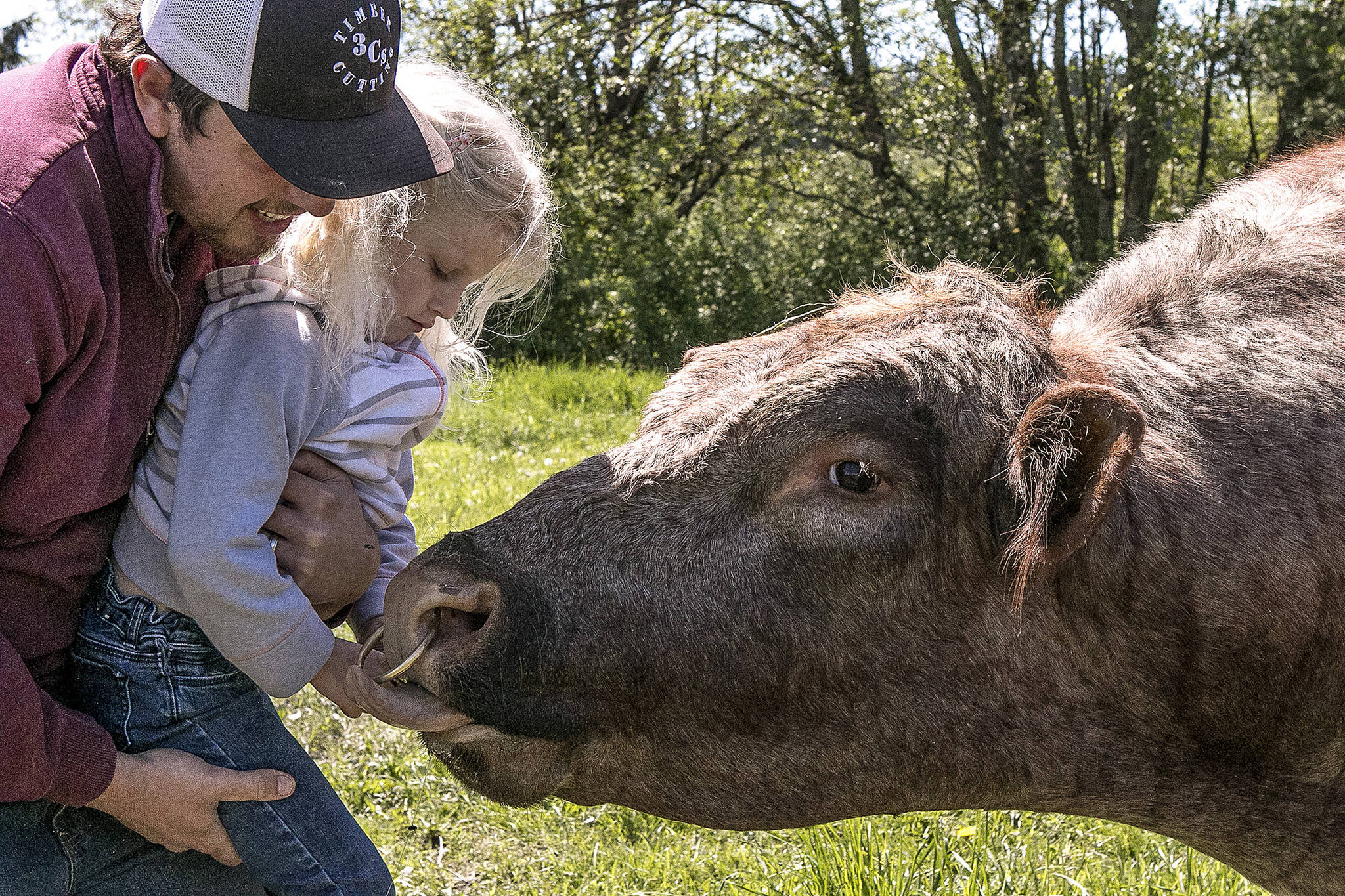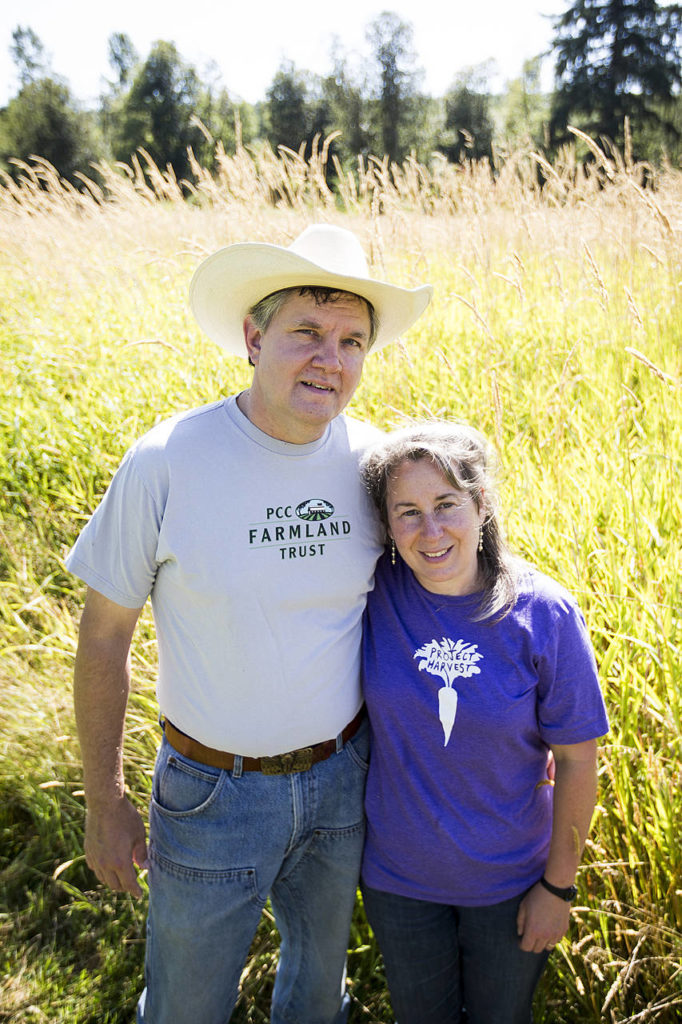SNOHOMISH — Seven farmers brought cameras into their fields, gardens and homes, capturing hundreds of photographs they later narrowed to three each.
The 21 photos are meant to answer two questions: Why is agriculture important to Snohomish County, and what hurdles are farmers facing?
The photographers focused their lenses on images that show the grit and love in farming families, but also the problems swirling around them: climate change that may bring more floods and droughts; increasing pressures from population growth and development; and the need to protect farmland and build a consumer base that supports local agriculture.
The project is called Photovoice, where a group works to identify and address issues through images that can be shared with consumers and policymakers. It was coordinated by the Snohomish Conservation District and the Nature Conservancy.
Photovoice is part of a larger effort to create an agriculture resilience plan for Snohomish County. Farmers participated in workshops this spring.
“We all came to the process with different ideas of what we wanted to say, and while talking, we realized that we wanted to say a lot of the same things,” said Bill Pierce of Soaring Swallow Farm near Arlington.
On seven acres near the north end of the Centennial Trail, Pierce grows fruit and vegetables for his family, friends and to donate.
He focused on two concerns in his photos. The first is how changing land use — farms to subdivisions and fields to condos — changes the culture of the county and threatens a stable food supply. It doesn’t make sense to reduce the amount of land for growing food while the population around it, all of whom need to eat, increases, he said.
The other issue he worries about is climate change.
Most of the farmers identified similar concerns.
Libby Reed, of Orange Star Farm in Monroe, grows vegetables for farmers markets and restaurants. Climate change and the pressure of land prices and development weigh on her mind.
She moved to Snohomish County a couple of years ago and started farming. Seeing rapid population growth and unusually wet winters and dry summers, she asks longtime local farmers, “Is this normal?” They tell her it’s not.
“But I think this is going to become normal,” she said.
Julie Allen, of Justamare Farm near Snohomish, took a photo of a donkey searching for food in a flooded field to show the climate’s impact on farming. She also tried to show the joys of agriculture, with a photo of a friend’s granddaughter meeting a gentle bull. She and her family have been on their three-acre farm for 40 years.
Anna and Vince Caruso have 10 acres between Snohomish and Monroe where they grow fruits and vegetables. Their 8-year-old son, Pieter, the oldest of three children, raises chickens for eggs.
The Carusos are teachers who have been farming for nine years. They worry about access to land for new farmers, and the ability to find reliable outlets for selling crops.
“It takes a lot of work, but people know that about farming,” Anna Caruso said. “What they don’t know is, when it’s a small farm, the farmer’s doing all of it.”
Her husband often spends hours outside, then comes in to answer emails and manage workers. It’s not just working the land, it’s running a business.
The Stillaguamish and Snohomish river valleys are places for farms, recreation, fish and wildlife habitat, and the neighborhoods where people live and work. A sustainable lands strategy for the county is in the works, focused on how to balance those uses, said Cindy Dittbrenner, natural resource program manager at the conservation district.
The Photovoice farmers want lawmakers to remove red tape for sustainability projects and add protections that prevent development on crucial agricultural land. Tax and policy changes should reward people who rely on thoughtful land management. Farmers need more information about climate change, and what it means for them, they said. They also need people to understand the importance of locally grown food. A “Grown in Snohomish County” brand was suggested.
Next year, the goal is to reach out to the public and plan specific projects, Dittbrenner said. Examples are a map of where farmland protection efforts should be concentrated, and a local model of how climate change is likely to affect flooding and groundwater.
She hopes the farmers’ photos attract attention and help land funding.
“The whole point of this project was not only to tell a story, but to lead to change,” she said.
Kari Bray: 425-339-3439; kbray@heraldnet.com.
See the photos
The Photovoice images can be viewed online at http://tinyurl.com/SnoCoPhotovoice.
Talk to us
> Give us your news tips.
> Send us a letter to the editor.
> More Herald contact information.




























